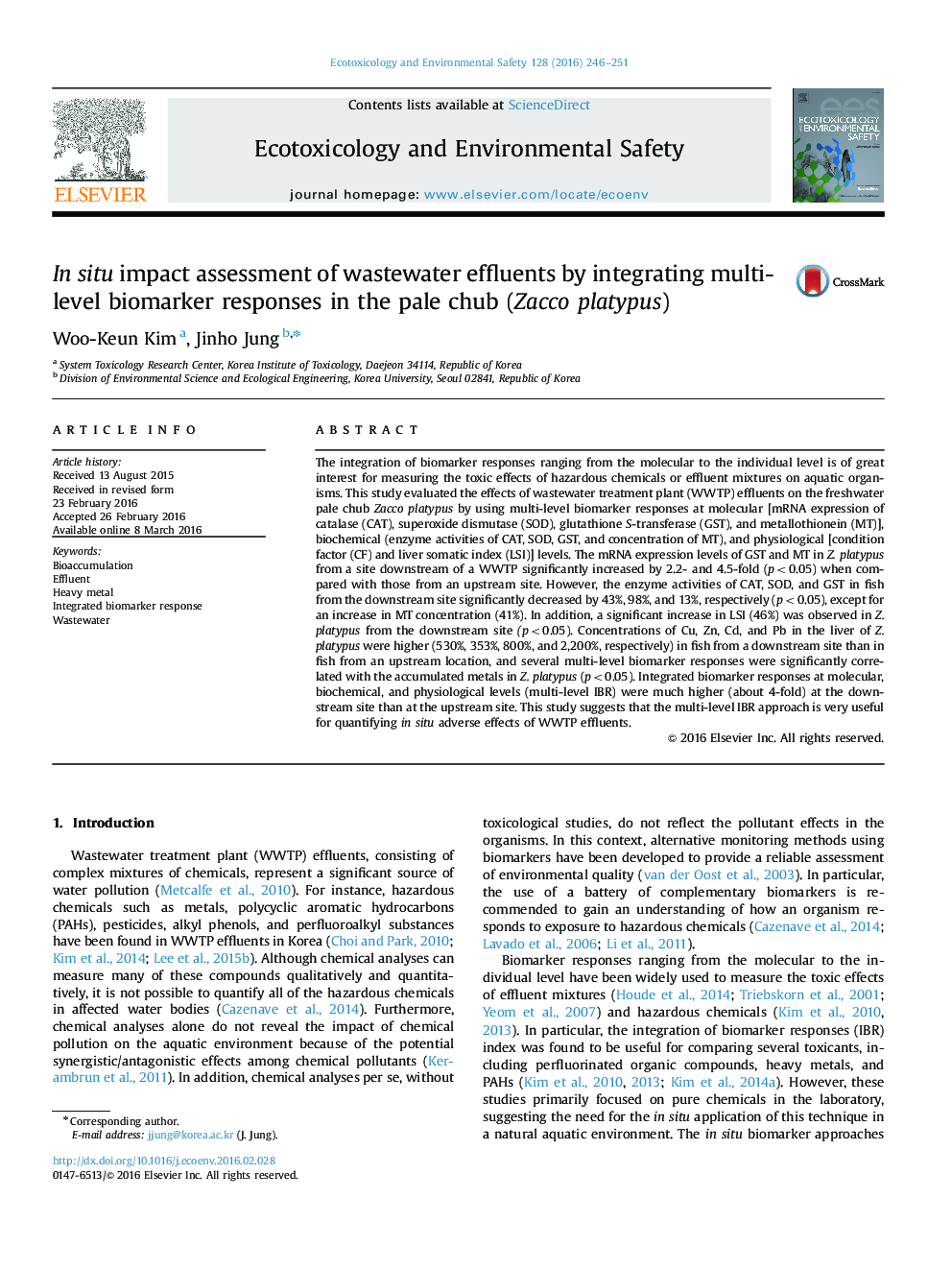| کد مقاله | کد نشریه | سال انتشار | مقاله انگلیسی | نسخه تمام متن |
|---|---|---|---|---|
| 4419341 | 1618935 | 2016 | 6 صفحه PDF | دانلود رایگان |
• Adverse effects of WWTP effluents were evaluated in situ using endemic pale chub.
• Multiple biomarker responses were related to hepatic heavy metal accumulation.
• The multi-level IBR index successfully identified downstream contamination.
The integration of biomarker responses ranging from the molecular to the individual level is of great interest for measuring the toxic effects of hazardous chemicals or effluent mixtures on aquatic organisms. This study evaluated the effects of wastewater treatment plant (WWTP) effluents on the freshwater pale chub Zacco platypus by using multi-level biomarker responses at molecular [mRNA expression of catalase (CAT), superoxide dismutase (SOD), glutathione S-transferase (GST), and metallothionein (MT)], biochemical (enzyme activities of CAT, SOD, GST, and concentration of MT), and physiological [condition factor (CF) and liver somatic index (LSI)] levels. The mRNA expression levels of GST and MT in Z. platypus from a site downstream of a WWTP significantly increased by 2.2- and 4.5-fold (p<0.05) when compared with those from an upstream site. However, the enzyme activities of CAT, SOD, and GST in fish from the downstream site significantly decreased by 43%, 98%, and 13%, respectively (p<0.05), except for an increase in MT concentration (41%). In addition, a significant increase in LSI (46%) was observed in Z. platypus from the downstream site (p<0.05). Concentrations of Cu, Zn, Cd, and Pb in the liver of Z. platypus were higher (530%, 353%, 800%, and 2,200%, respectively) in fish from a downstream site than in fish from an upstream location, and several multi-level biomarker responses were significantly correlated with the accumulated metals in Z. platypus (p<0.05). Integrated biomarker responses at molecular, biochemical, and physiological levels (multi-level IBR) were much higher (about 4-fold) at the downstream site than at the upstream site. This study suggests that the multi-level IBR approach is very useful for quantifying in situ adverse effects of WWTP effluents.
Journal: Ecotoxicology and Environmental Safety - Volume 128, June 2016, Pages 246–251
